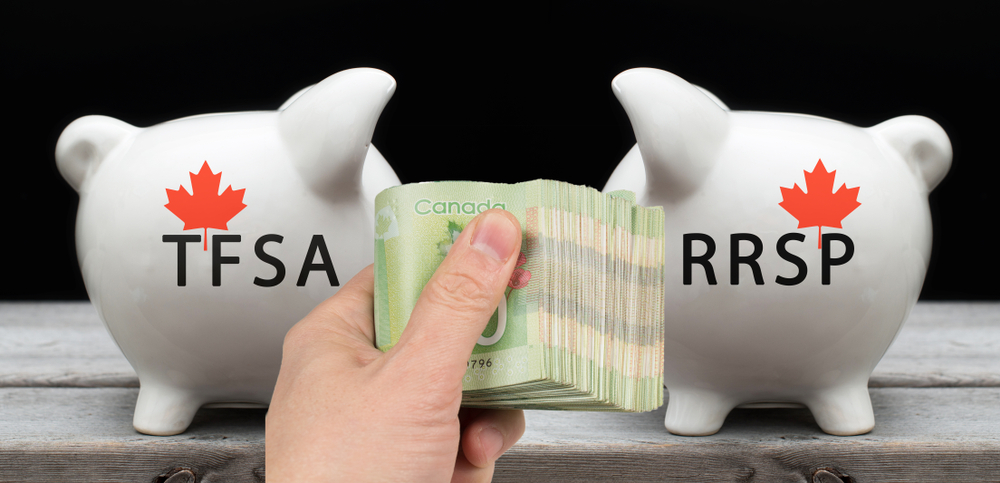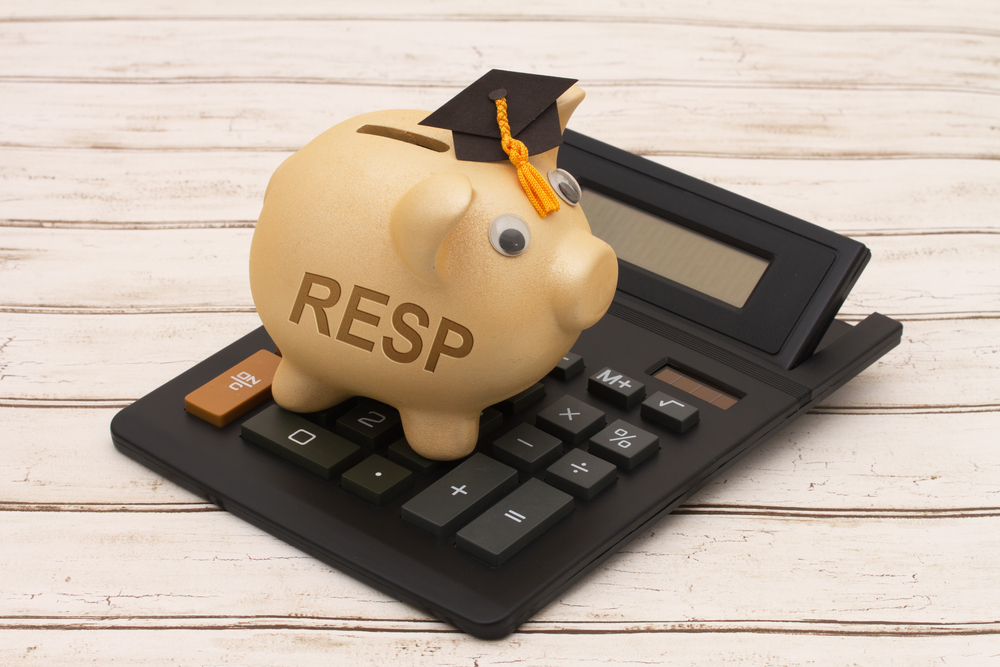This week’s blog is about the different types of investment accounts an individual can open up in Canada. Since we are right around the first 60 day mark, which means the last chance to contribute to RRSPs for the 2018 taxation year, I figured it’s a great time to explain how to choose what type of investment accounts to invest into.
Before I explain the various investment options Canadians have, I will first explain what individuals can invest in these accounts. The idea is that these accounts dictate the tax advantages people will benefit from. However what they can actually invest is totally up to the risk tolerance of the individual. People can invest in anything from individual stocks, mutual funds, GICs to regular savings accounts. If the investment time horizon is long, and the individual’s risk tolerance is medium, you would not likely have that individual invest in GICs as the rate of the return would not make sense for this individual considering their time horizon and risk tolerance.
Now that we know we can practically invest in any type of investment product, let’s discuss the various investment vehicles that are available to Canadians. I will go one by one and give the pros and cons of each type.
RRSP – Registered Retirement Savings Plan
This type of investment account is important for multiple reasons. The primary reason someone would invest in an RRSP is for retirement planning, and the idea is that this type of investment account will help you achieve your retirement goals faster. The reason for that is because an RRSP contribution is tax sheltered, which means any growth is exempt from taxes until the funds are withdrawn. The second is that the RRSP is considered a tax deduction against your highest income tax bracket, which means that someone in a high tax bracket will get a very decent refund back and can reinvest the refund and grow their investment balance exponentially.
Another reason for someone to invest in an RRSP is to use a $25,000 as a down payment towards their first time principal residence called the Home Buyers Plan (HBP). If you are dealing with a couple, they can each invest $25,000. There are strict rules in how long these investments have to be in an RRSP before a withdrawal can happen, and the RRSP repayment term is quite strict, if not followed a portion of the withdrawal will be considered an income to that individual. If you want further details please read my article here on RRSP withdrawals for first time home purchase.
The last reason someone will invest in an RRSP is for the Lifelong Learning Plan (LLP). This withdrawal from RRSP is for the purpose of going back to school and using their RRSPs to pay for their studies. Again there is a strict repayment period for individuals and if not followed just like a HBP the amount would be considered as income in that particular year.

Example
Lisa is a very high income earner. She earns over $300,000 working for one of the biggest companies in her industry. Her company however does not contribute to her retirement plan and this is why it is important for Lisa to contribute and max out her RRSP’s every year, because an RRSP contribution means 50% back in the form of a refund back every year. On top of this, Lisa has no immediate plans to spend any of this money. She has a home that she lives in and she is very young. Her investment into an RRSP should at the minimum be in mutual funds assuming she has a medium risk tolerance level. She can still be in a low to medium risk tolerance level and invest in mutual funds, but if she has a fear in the markets she should invest in something safe like GICs.
RESP – Registered Education Savings Plan
This type of investment vehicle is for parents with a child or children, specifically used for their education planning. This type of investment account makes it very easy to help parents achieve their goals of raising enough funds for their child/children’s futures since the government deposits a 20% grant to every dollar investment. Up to a lifetime grant of $7,200 and a maximum of $1,000 per year assuming the parents are behind on their RESP contributions. If not, it is a maximum of $500.
These investments are grown tax deferred just like an RRSP because they are in a registered account. The different with this type of registered account is that it does not get deducted against a taxpayer’s return, and thus generate a further refund.
Once the funds are withdrawn, the grant and growth component become taxable on the child’s tax return in that year. However since the student likely won’t have more than 10k in grant and growth, they will not have to pay any taxes as a result.
The RESP can be opened as an individual account or a family account. Family RESP’s give a little bit more flexibility in the sense that parents can use grants from both children on the first one, especially if they fell behind with the first child early on.

Example
Lena and Grant had baby Leon and they are very interested in their child’s education. Since their income is very high, it is unlikely that their child will ever be able to receive any government loans when he is old enough to attend University. Depending on their goals they can contribute now or later on in their lives, since they can always play catchup on their contributions in the future.
TFSA – Tax Free Savings Account
The income earned in this type of investment vehicle is tax exempt. Many often ask which tax vehicle, RRSP or TFSA, makes sense for them. Depending on what these funds would be used for and where they are in their lives, the answer from their financial advisor could be very different.
If the plan is for growing their retirement plans early in their lives, contributing to their RRSP makes more sense. However if they have some additional room and they would like some funds for a rainy day or for vacation it makes more sense to contribute to a TFSA. The funds invested for short term purposes will likely have a different risk profile and be invested in something lower risk like a GIC or a low risk mutual fund.
Example
John and Nancy are both 60 and they will retire in 5-7 years, their income at this point is very low, they make 40k each and they have both invested in their pensions over the years and have amassed a significant pension. At this point in their lives contributing more towards their pensions wouldn’t make sense so it would be smarter to invest in their TFSA. Which funds they draw first during retirement depends on their plans, and a financial advisor is very important to help this couple decide how to plan their retirement.
RDSP – Registered Disability Savings Plan
Parents that have a child with a disability can also find solace in the Registered Disability Savings Plan (RDSP). It is designed as a long-term savings plan to help disabled persons be better financially prepared for the future. For people living on a low income (below $30,000) the federal government will include up to $1,000 into this plan each year for up to 20 years in the form of the Canada Disability Savings Bond. For family income less than $91,831 on the first $500 contributed in the RDSP, the beneficiary will receive $3 for each $1 contributed, for the next $1,000 it will be $2 for each $1 contributed. Maximum grant for any one year is $3,500 and a life time grant of $70,000. If the beneficiary’s income is above $91,831 then they will receive $1 for each contributed amount up to $1,000. Once the child turns 18, the income qualification is on the disabled individual.

This investment vehicle is almost a combination of the RESP and the RRSP. Although the purpose of the investment account is not for the purpose of a child’s schooling but the government does provide a grant component for a disabled child’s future. The idea is for the parent to contribute for a child’s long term needs so that the government doesn’t have to only pay for the care of this child in the future.
Example
Mart and John have a child that was born with a long term disability, one that they want to make sure they are able to pay for once they both pass away in the future. Since their incomes are very low their advisor recommended they open up an RDSP. The government will contribute a large sum of grant money, and with their new provision will even go retroactive to make these contributions, assuming the disability is backdated.
OPEN – Non Registered Investment
This is the last type of investment vehicle and one that is least desired, but if an individual has exhausted all other investment vehicles that suit their needs this is the only choice they have. Any growth in this investment account carries potential distributions that are taxable in the forms of T3’s or T5’s, thus an individual may pay tax even if they do not draw from the investment account. Also any withdrawal is taxed in the form of a capital gain when the investment account is divested.
In the long-term if an individual has amassed enough wealth there is no other choice but to also invest in an Open account.
Frank and Bernadette have maxed their RRSP’s and they have no need for RESP’s as both their kids have graduated from University and they always maximize their TFSA’s. They ask their financial advisor what else they can invest in, and they are told that non-registered is the only option left. However, even here they are told that they could potentially invest in investment products like corporate class investments with mutual funds that will at least not pay out much in the forms of distributions. This type of product will help them grow their investments and defer the taxes they would pay until they dispose of these funds.
Everyone’s investment path differs because no two situations can be the same, this is why it is very important for you to have a financial plan prepared from a Financial Advisor. If you need a plan prepared, please contact me and I will help you as a financial advisor through Canfin Magellan Investments.
